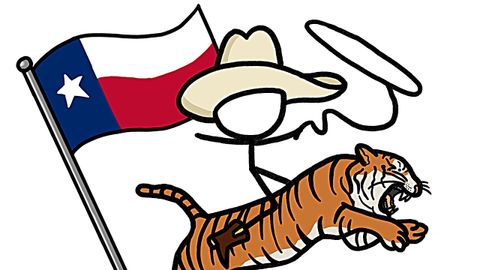
Subtitles & vocabulary
Why Are There So Many Tigers In Texas?
00
PC home posted on 2017/08/24Save
Video vocabulary
apparently
US /əˈpærəntlɪ/
・
UK /əˈpærəntli/
- Adverb
- According to what you heard; from what can be seen
A2TOEIC
More community
US /kəˈmjunɪti/
・
UK /kə'mju:nətɪ/
- Noun (Countable/Uncountable)
- Group of people who share a common idea or area
- A feeling of fellowship with others, as a result of sharing common attitudes, interests, and goals.
- Adjective
- Relating to or shared by the people in a particular area.
- Shared or participated in by all members of a group
A2
More consume
US /kənˈsum/
・
UK /kən'sju:m/
- Transitive Verb
- To eat, drink, buy or use up something
- To take all your energy; focus the attention
A2TOEIC
More predator
US /ˈprɛdətɚ, -ˌtɔr/
・
UK /'predətə(r)/
- Countable Noun
- An animal that hunts and kills other animals
- Person preying on the weak to gain advantage
B1
More Use Energy
Unlock All Vocabulary
Unlock pronunciation, explanations, and filters
